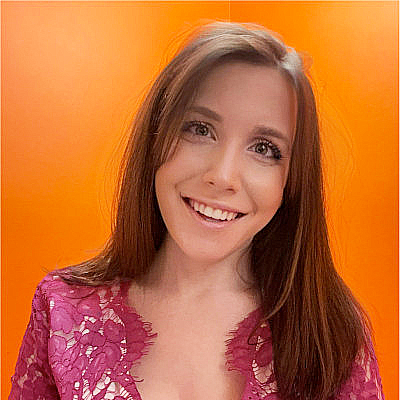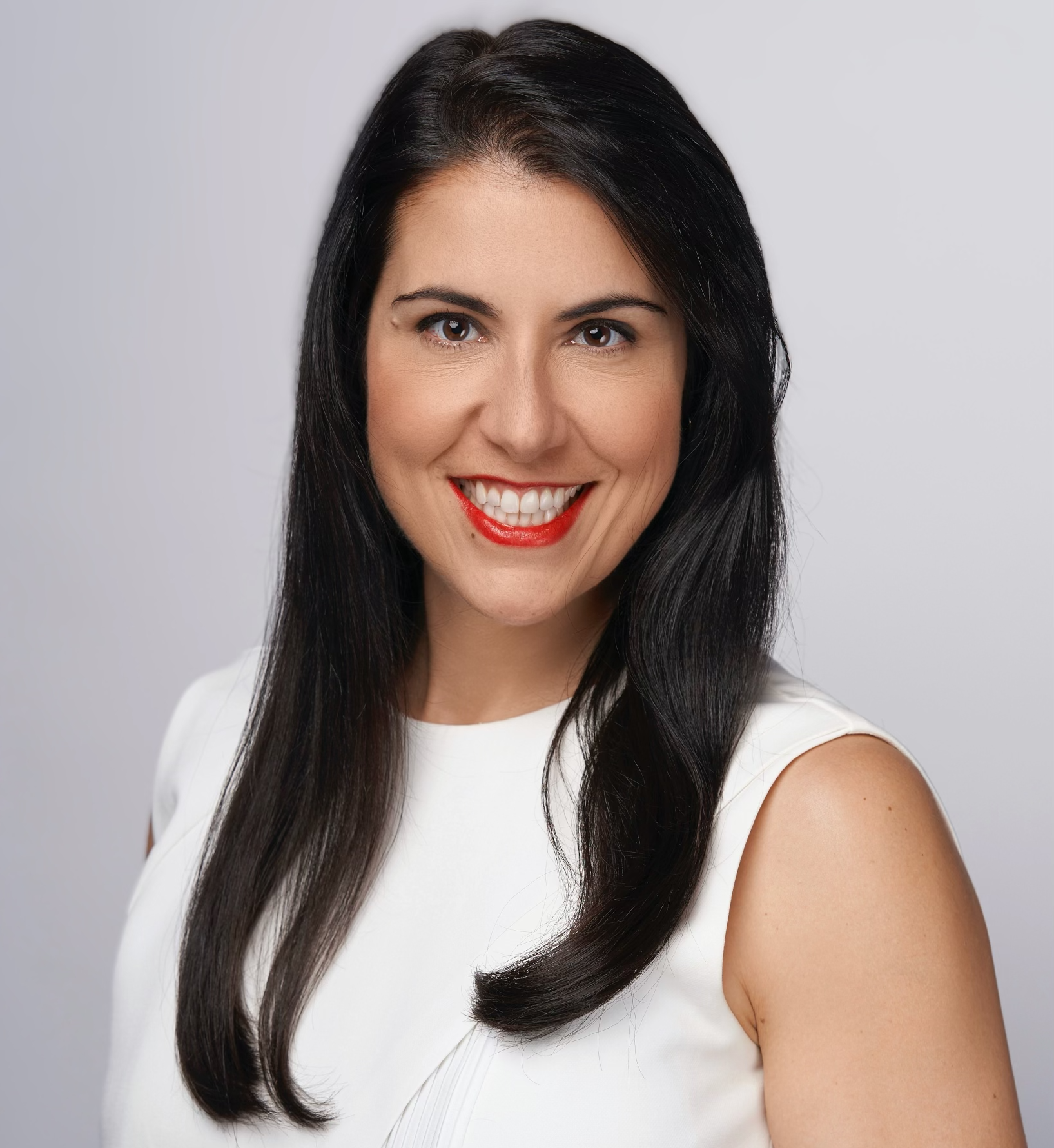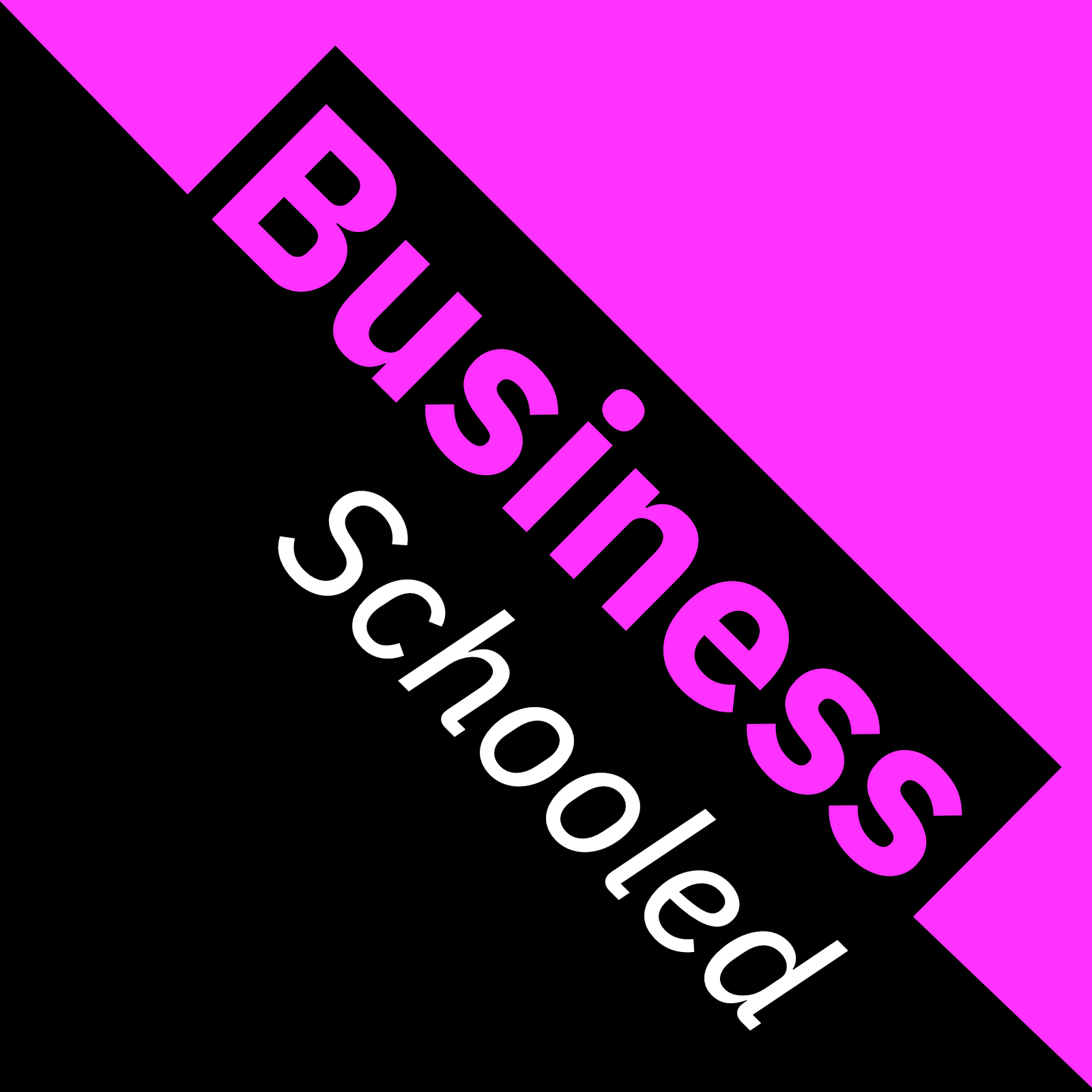Sustainability and tech with Suzanne Livingston
- 0.5
- 1
- 1.25
- 1.5
- 1.75
- 2
Speaker 1: Business School.
Daryl Pereira: Welcome everybody. This is the Business School Podcast, where you learn how the world of business is being redefined. My name's Daryl Pereira, and I'm a Senior Content Strategist here at IBM. Today I'm really happy to be joined by Suzanne Livingston. So Suzanne, if I could ask you to tell us a little bit, who you are, what you do, a little bit about your background.
Suzanne Livingston: Thank you so much for having me Daryl. It's a pleasure to be part of the podcast. My name's Suzanne Livingston, I am the Vice President of Engineering, Site Reliability Engineering, Product Development within the IBM Sustainability Software Unit. And in sustainability software we make software products that help organizations achieve their sustainability goals, whether that's improving their pasture when it comes to carbon emissions, all the way through to how to better run their operations, all the way to what they buy from other companies and how sustainable those products and services are.
Daryl Pereira: And how did you get to where you are, how did you get into this role? What was yours planned to do? Is this something that ...
Suzanne Livingston: Not at all. So I actually started in IBM research when I was in grad school and I was a developer, building new tools to help people at the end of the day really spend less time doing busy work in their workday and getting more critical thinking done, and we did that through a host of different types of innovations. And I'd say that theme has run true of all the different products that I've created at IBM. After I was in research, I went and launched four different new product businesses for IBM, all focused around this theme of productivity, being more efficient, some within the financial services space, some specifically for developers, some to connect supply chains and bring transparency into the supply chain. Now in the last few years I've chosen a focus, I've moved from product management and launching new products, to building technology with the engineering team. Kind of getting back to my roots of being a developer, where I think I can make a significant difference is in helping engineers be more efficient with not just how they're spending their time, I think engineers can be quite good at being self- managed, but actually having a strategy that aligns to the work that they do. And so that every line of code is actually something that a customer or a user will end up getting value from, so trying to reduce a lot of the waste that's in the engineering system.
Daryl Pereira: And you talked about sustainability software, in case folks are wondering what kind of software that is, could you just talk a little bit about some of the products and some of the areas that fit into this area of sustainability when it comes to engineering?
Suzanne Livingston: So within IBM we have a number of different software product areas. Some of them are focused on data and AI, some are focused on security software. Another areas focused on automation tooling. We have an area of sustainability and sustainability isn't just about ESG or CO2 emissions tracking. For us, sustainability is about the work that we do. So we make tooling that is for companies to use to be more productive and efficient. One area of our products is focused around heavy equipment, heavy asset management, think about planes, trains, automobiles, think about nuclear reactors, hospitals, buildings, you name it. So this product happens to be on all seven continents, so yes, in Antarctica there are assets that we are tracking in this particular tool and out in outer space, we have satellites that are being tracked and they're tracking in the sense of being able to maintain them, knowing when it's time for them to be maintained, when it's time for them to be updated. Also, when there's a failure, what's the cause of that failure? There's a lot of opportunity to lengthen the life of these assets so that we can get the most out of them over time and not incur the environmental damage associated with the continuous changing of heavy assets and equipment and machinery. So that's on one side. Another side is about real estate management. So taking entire buildings and being able to understand their utilization, be able to do some of the mechanics around lease accounting, space planning, floor planning. And then we also have an area that's focused on supply chain management. So we have technology that will allow you to see inventory levels when you're making a purchase. And a number of US retailers, in fact you probably have used some of them, when you go to execute that cart, will actually tell you if you can get this in a certain amount of time just based on inventory that we're tracking in different locations across multiple systems. And then also across multiple supply chain partners, see across from a farm all the way to a store where the transit, where the process of creating food products, creating non- food products has taken. So you can actually trace from origin to a consumer. And I think consumers have been pushing a lot for sustainable products. So not just label it sustainable, but prove to us that there are sustainable practices here. So we have a lot of technologies that we've created in order to help identify where the source of food, where the source of a product has come from, what are some of the manufacturing key performance indicators that have gone into creating that product. Like imagine you're in a store buying a pair of jeans and you want to know how much water, how much emissions went into creating that specific pair of jeans. So a host of technologies all centered around operations, asset performance, real estate performance, that we believe are fundamental in making significant improvements to how much energy we use and how much impact we make in the environment. So not just buying carbon offsets, but actually changing the practices inside your organizations, that has to be linked to the work that you do and the operations of your organization so that you can see where to focus the attention, that's really what we mean when we say sustainability software. It's be able to visualize what your current output is and then understand what systems, processes, assets, buildings, locations, supply chain partners are impacting that output the most. And then be strategic about making choices on where you're going to focus for major reductions, and that together gives you a full picture of how your organization is making an imprint on the planet.
Daryl Pereira: That's fascinating. And it's a recurrent theme, this idea that we cover sometimes on the podcast, that you think sometimes when you think about sustainability in these areas, we might think about certain areas of the industry or markets, but like you're saying, the difference that something like when you get into, especially when you look at big business and whether it's a big retailer or something like that, just the amount of difference, even what may be small differences to a big retailer and because of the scale of the business, it can have massive impacts. I know one area then where this seems to come up is that then obviously we rely quite heavily on our governments to help, especially in this time now where we're thinking about things like climate change and how we adapt. And governments are beginning to, just for the reasons that you state, are beginning to look to business to make sure that where we can make cuts and where we can be more energy efficient, that we are. And is that something that you're seeing, and how do you characterize what you're seeing in terms of how the environment in which the software lives is changing at the current time?
Suzanne Livingston: It's a unique time right now. We all wish that we didn't need to have the grand push of the government in order to push us to make the best decisions for our planet. But unfortunately, sometimes we do need that and we're seeing the effect of that right now. So just looking at last year, so last March, the US Security and Exchange Commission, the SEC, they shared publicly that they're going to start to standardize around climate related disclosures for investors. They're a part of this growing awareness around the importance of ESG initiatives, environmental social governance initiatives, and are asking companies to back up their goals with documentation. So if you're a publicly traded company and you submit your financial reporting, you're also being asked to submit your ESG reporting. And where we are to date, so that was last March the SEC unveiled their plans to do this, and I think it was November of last year that all of the call for comments had been brought together and now are being analyzed for what I expect we're going to see this year on, well what does this disclosure entail? What are these rules? What are the mechanics behind it? So expect to see that throughout this year. But ever since the SEC announced these plans in March of last year, a lot of companies have come forward asking, " Where do I begin? This is an enormous effort, what can I do to get started?" And so our organization mainly focused on technologies to support emissions like this, also has a consulting organization that I've seen a tremendous increase in interest, just laying out what should my goals be? Where should I get started on this journey? And so yeah, that's the timeline that we've seen a tremendous amount of push in the last year and a half and I expect that to continue into 2023.
Daryl Pereira: And in terms of the main challenges the businesses face when it comes to meeting these regulations, which obviously is so important, we need to make sure that we're able to address these regulations, what would you say in terms of what are the challenges that business are facing?
Suzanne Livingston: So I think the first thing is companies are coming to us saying, " I don't know where to begin." And so they're not quite sure. First, we don't know what's going to be included in the regulation, but assuming that we're going to have some data that supports our sustainability goals, carbon emissions output, what can we do in order to start getting confidence that we can accurately report on these numbers when these rules go into effect? So the first thing that we see companies doing is one, getting an ESG strategy in place. What should my goals be? What timelines do I want to achieve those goals in? Do I have the data available to me today in order to understand where I am with these goals even today? And surprisingly, there's a lot of data quality issues, maybe unsurprisingly. So when it comes to just assessing where you are today, looking across all of the data silos and organizations that store some amount of this information now and assessing the accuracy of it. So make sure your data warehouses are cleaned up, that you have numbers that you can trust. And still we see a lot of manual data extraction, going through files, pulling out numbers, rather than using tooling that can do this in an automated way. So there's a lot of data cleansing accuracy that needs to happen. I think the other challenge is teams are overwhelmed. They don't know where to begin. A lot of times they will rely on things like online calculators, which will help give them a input or output spend model that tracks emissions based on materials used. For example, a company might purchase some amount of steel for some dollar figure and then determine the quantity of carbon dioxide output equivalent that's released from there. But there's a lot of pushback on spend based calculation, the methodology is very aggregated, in some cases it's dated and you can see examples where the numbers are reflective of scenarios from years ago. So how do you get more accurate figures here? I think a lot of organizations have started looking at supplier surveys, but those too can often have challenges in their accuracy, because it's based on what somebody is submitting. So overall, just a lot of different challenges, data quality challenges, data collection challenges, overdependence on data that could be out of date quickly and just not knowing where to begin. And I too think that the levels of tracking, again, we don't know what the regulation's going to ask us, but we expect that there's going to be data related to scope one, scope two and scope three emissions. And while scope one emissions and scope two are fairly straightforward, scope one emissions, these are your direct greenhouse gas emissions, these are the sources that you control, that your organization operates, like for example, fuel in your boilers, fuel in your vehicles, what's running your furnaces. So anything that you're using, these are your emissions, that's your scope one, scope two are your indirect emissions, so I've purchased electricity to run my office. I have steam, I have heat, I have cooling. The emissions are occurring somewhere else, but they are counted for in my organizations overall footprint. So scope two, again, you have bills, you have meters that give you readings. Scope three emissions are the ones that are the hardest to get. What are all the sources that have contributed to impact on the planet across the supply chain for let's say a given product or a service. So that's not just what you run, but what you've purchased from other companies, the transportation for it, as well as the manufacturing of it. And if you think about a product, it doesn't just come from one place and end up in another. It's gone through multiple transformations from, think of the raw materials that originate at a particular source and then get purchased and aggregated and manufactured and remanufactured into another product, and combined and packaged. It's tracking the emissions across all of those sources, all the way to the consumer and then the consumer's usage of that particular product. It's an incredibly dense amount of information, and the methods that organizations are using right now, typically forms, asking suppliers to share this data with them, is fraught with inaccuracies. In fact, so much so that two gentlemen who I follow, Bob Kaplan and Karthik Ramanna, who Bob is out of HBS, and they actually both won the HBR McKinsey award a couple years ago, around their work on scope three. What they said regarding scope three is that they're almost impossible to measure. Now, a car maker or an aerospace manufacturer would have to reach out to tens of thousands of suppliers and supplier suppliers and say, " Tell us how many greenhouse gases are in every one of the tens of thousands of components we buy from you." So in a way, there is no way for them to collect that information. However, we've been working on technologies that allow supply chains to share this type of data at a product level, at a product category level, at a location level and collect that directly in the supply chain. So you're not relying on forms, but you're actually relying on inputs that could be tied to backend systems that track this information automatically. So there's a lot of skepticism around scope three and ability for organizations to collect it, but I think we're making tremendous headway in our ability to collect data from across the supply chain, but there's so much more to go, so much more to go. And I think what I like most about Bob and Karthik's approach to thinking about this is that they're thinking about it from a basic accounting standpoint, where you're accountable for what you share, what you say about the production and the process that you follow. And so they refer to it as eLiability accounting and they assign down all of the outputs for products and services through the supply chain. I'll give you the link to the article so that you can share it in the podcast, but they also advocate for using technologies like blockchain for a immutable system of record, and that's exactly what we've been doing in IBM. We started a pilot last year with an organization who wanted to track carbon output equivalent through each stage of manufacturing, from a chemical source through to a final product. And so every participant, and this was with one product, but every participant in that supply chain submitted data about their carbon equivalent for the stage of manufacturing that the particular material, chemical product went through. And then we aggregated those at the end and came back with a number that reflected what we could collect from each of the different suppliers on their overall emission for that particular product. And I think approaches like this where you're putting the accountability back on the participant, the producer of that element is the way to make it produced forward because now we have a way to trace it back to an original source, and we also have a way for us to hold that source accountable, versus taking aggregated data across multiple parties and then not knowing how to find who is the source and really validate it.
Daryl Pereira: That's fascinating, especially as I'm sure many people may realize just how complex things like supply chains get very quickly in terms of, we saw a lot of it during COVID, where things just weren't able to get to us, largely because we just start to see that we live global economy and so many things come to us from different places. So the ability to be able to then use technologies like blockchain to be able to open up and to uncover the data that surrounds all of this business and to be able to then map it and be able to, like you say, introduce these levels of accountability is really important, it's key.
Suzanne Livingston: Exactly. And we have a lot of technologies that we create within IBM sustainability software, but we also use these practices ourselves in the creation of our products. So overall trying to create an overall sustainable business ourselves.
Daryl Pereira: And sometimes it might be a little bit easier to understand, we think of physical goods like a car and all those pieces, but like you're saying in terms of what you're doing on a day- to- day, obviously any human endeavor is going to lead to emissions. And so in terms of when you look at software, when you look at the IT industry, what do you see there in terms of whether there are potentially opportunities to be made around sustainability?
Suzanne Livingston: Yeah, absolutely, so much opportunity. I'll also share with you another link. We recently published a paper on the practices of software engineering that can contribute to better usage and utilization of resources. So really it all comes down to, in our case, how much power we're using to run the systems that we need to run in order to serve our clients. And so if you think about just a simple transaction, if I were to just pay you, let's say you bought me some coffee and I wanted to pay you back for that coffee, it seems like a simple transaction, but it involves a huge network, complex network of interconnected systems, data exchange, and in some cases for the more complex software that we provide, run AI models that give you insight into when you should be replacing your assets. These are systems that take a tremendous amount of complexity and energy to run. And so naturally what we all do when we are trying to service our customers and make sure that they stay whole, especially during times the holiday peak season, We have a tremendous amount of customers who are eCommerce, we had always over provisioned them. And we're not unlike everyone else in the industry, over provisioning is common, give more resources to the systems so that we don't fail when there's a peak in usage or peak in demand. I'd say that's fairly common, but also common is that there's a tremendous amount of unused capacity out there. So the more over provisioned you are, the less you're actually using and needing, but the more that you are keeping power on. So our team ended up doing an activity around how could we use AI to help reduce the over provisioning, reduce our costs, improve performance, but really scale, right- size the environments so that way we can meet the demand without over provisioning. And just by way of example, one of our systems that runs eCommerce transactions, oversized its resources by about 80% on one of the days during the holiday peak season, one of the databases oversized around 78%, so lots of over provisioning. And what they ended up doing was built, like I said, an AI model that helped us understand how we could optimize the systems that were part of, in this case, our eCommerce system. And by doing that, we were able to right- size the environments, which also ended up enabling us to have faster implementation when we were rolling out changes, faster results, our team spent less time managing these resources that were over provisioned or bloated, and then that also helped us save a tremendous amount of kilowatt- hours. So in total, turned out to be over$ 100,000 worth of cost optimization, but total energy savings was in the 4, 200 kilowatt- hours, just for one example of a client using the system. And so I bring that up as an example of we don't even think about hitting a transaction, like making a payment, making a purchase, and how much that can take in terms of energy and just how much less it could take if we were able to meet demand exactly where it needed to be. And if we can use predictive modeling, we can use mechanisms for meeting that demand without over provisioning as a continuous practice, imagine how much impact that can make across all products that are serviceable through software. So we look at it on... that's a very simplistic example I gave you too, because in that example, nothing's changed about the architecture of the system. It's simply provisioning the resources, elastic availability of those resources. There are things that we can do as we're writing software, as we're building our architectures, reducing complexity in the topology, reduced data transportation across hardware and software, design for efficiency, build in a way to balance resource constraints, recognize that there's power draws, clock speeds, idle hardware still consuming energy. I think that there's a growing group who want to create architectural designs that are conscious of energy consumption and usage in the long run and treat it as a resource constraint.
Daryl Pereira: Maybe switching gears a little bit, but just pivoting on, just when you talk about energy, I hope you don't mind me saying this, but I'm sitting here in the West Coast, you're over on the East Coast and you've driven halfway across the state to record this podcast and it's gone 10: 00 PM for you at night, and I'll say just the level of intensity and the energy that you bring to being able to share your ideas after I know what must have been a long day for you. In terms of folks that are interested in getting into this space, would you have any tips and tricks, things that you found successful? What gives you the energy to be able to be impassioned? I was going to say coherent, but you've gone way beyond coherence, you're well into impassioned in terms of what you feel for this area. Would you have any tips to anyone that may be starting early in their career?
Suzanne Livingston: Oh, that's so kind of you, as I sit here at 10:00 PM thinking, I hope all of this sounds coherent and understandable, so thank you for that. So I was in business school too at one point, and I did an MBA and then I went back and did a master's in engineering management and I never really thought about a job. I thought about a career. And when I think about it, the long run, what is that impact that you want to make and that you want to leave behind? There's something greater than, yeah, I want to write code all day, or I want to build new products. It's like, what kind of difference do you want to make? And perhaps it was the time when I had, and it's so cliche, but the time when I had my kids. So I was telling you earlier, I have 12 year old twins, when it really settled into me that my time on this planet is finite and their time on this planet is finite, but there's going to be a period of time that I have the opportunity to help leave it in a better place. It's as simple as that. I think we can do that while still creating new technologies that are going to take us into their future and beyond. And I think I'll still always be chasing that desire to have the most efficient work experience that you can, whether it's operationally in your organization, or you personally in your productivity, because that is sustainability. The more that you're able to accomplish what you can accomplish using less of what the world only has so much of, then that to me is a sustainability win. So anyway, I welcome you to look a little bit more about the products and services that we offer. If you go online, ibm.com/ sustainability, you can learn more about them. But I think they do touch on every aspect of operations in an organization, and that's really where you can make a difference. Again, it's not about buying carbon offsets, it's about actually changing the practices that we have to make them more sustainable.
Daryl Pereira: I love what you said there in terms of that idea of career, job, sometimes we use those terms interchangeably. You deliberately there didn't, you talk about the idea of thinking of your career work, where you do fit in, where you can make a difference. And so appreciate the fact that you're obviously making a huge difference, you've had a very successful career and one I'm sure will continue to, but I appreciate you taking the time today, Suzanne, to share with us. I know people can find you on LinkedIn, where you share a lot of, especially around this idea of the intersection of business, sustainability, software engineering, that side of it. So if anyone's really interested, I would also encourage them to follow you there on LinkedIn, if that's okay.
Suzanne Livingston: Absolutely. And if anybody has a question that they think would be worth me sharing more about, I'm happy to do that on LinkedIn too. So feel free to connect with me and drop me a note. Let me know what's on your mind. If you stayed with the podcast this long and you're still listening, then you definitely have an interest and I want to hear from you too. So thank you.
Daryl Pereira: All right, well, thanks again, Suzanne Livingston, VP of engineering at IBM. And you've been listening to the Business School podcast. Check out other episodes, we discover new emerging trends in business and we get leaders, academics, and folks that are working in business that will tell us what's going on and what's changing, as this area moves so fast. But thanks again, Suzanne, have a wonderful evening.
Speaker 1: Thank you for having me.
DESCRIPTION
Suzanne Livingston is a product development executive with a passion for improving sustainability, transparency and culture through data and insight. As a Vice President in IBM’s Sustainability Software business unit, Suzanne leads a large, global team of software engineers building next generation sustainability, asset management & supply chain technologies using AI & IoT. In this episode, Suzanne explains how businesses can get ahead of new ESG reporting standards, how to make IT more sustainable, and the path that has brought her to this point.
Your host: Daryl Pereira, IBM Senior Content Strategist
Key takeaways:
2:46 - What is sustainability software
7:51 - What government legislation is coming through and how can businesses respond?
20:10 - What is the role of IT when it comes to sustainability?
25:53 - Advice for building a successful career
Today's Host

Cristina McComic

Sam Smitte

Amanda Downie

Daryl Pereira
Today's Guests


